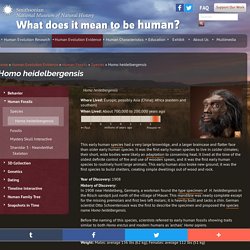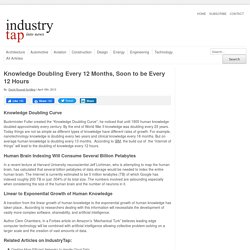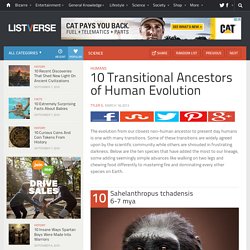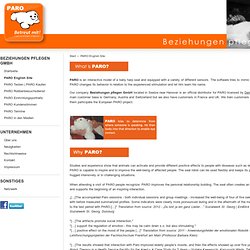

Lucy. Kanzi. Type one civilization. Will Humans Achieve a Type 1 Civilization by 2100? - h+ Mediah+ Media. Nikolai Kardashev, a Soviet astrophysicist born in 1932, devised a method of rating advanced civilizations.

Technological advances, according to Kardashev, could theoretically create conditions where a society could maximize use of energy: first, maximizing the energy striking a planet from its local star; second, maximizing all the energy emitted by a local star, not just that which falls on that civilization’s planet; third, maximizing the energy derived from all the stars in that civilization’s galaxy; and fourth, maximizing the energy from all the galaxies and intergalactic medium within the entire Universe. He categorized each of these stages as Type 1 through Type 4. Based on Kardashev’s speculations where does our civilization sit today?
We are Type 0, somewhere between 0.7 and 0.72 producing 15 Terawatts of energy, a mere fraction of the energy a Type 1 would harvest from the physical world. How? To get to Type 2 we will maximize the use of antimatter as an energy source. The Kardashev Scale - Type I, II, III, IV & V Civilization — From Quarks to Quasars. Mass Effect citadel.

Image credit: BioWare Theorists assert that, as a civilization grows larger and becomes more advanced, its energy demands will increase rapidly due to its population growth and the energy requirements of its various machines. Homo heidelbergensis. Where Lived: Europe; possibly Asia (China); Africa (eastern and southern) When Lived: About 700,000 to 200,000 years ago This early human species had a very large browridge, and a larger braincase and flatter face than older early human species.

It was the first early human species to live in colder climates; their short, wide bodies were likely an adaptation to conserving heat. Introduction to Gödel, Escher, Bach Lecture. Human Evolution Evidence. Scientists have discovered a wealth of evidence concerning human evolution, and this evidence comes in many forms.

Thousands of human fossils enable researchers and students to study the changes that occurred in brain and body size, locomotion, diet, and other aspects regarding the way of life of early human species over the past 6 million years. Experience 'Joseph Campbell and the Power of Myth' Carl Sagan's Cosmos: A Personal Voyage. Relativity: Einstein's theory of relativity in animations and film clips. Einstein Light.
Cultures. China's Challenges. NETA Feed Info: 5/60s - Saturdays, beginning October 5, 2013 @ 1630-1730ET/HD04.

NOLA code CHIN 0100 H1 China has new leaders. "The Chinese Dream," says China's new president, Xi Jinping, is "the great rejuvenation of the Chinese nation. " China is an economic superpower: the largest population on earth is undergoing the greatest transformation in history and competing in every arena of human endeavor. China's growing strengths have global import. But China is beset with problems: economic dislocations, dangerous disparities between rich and poor, inadequate and imbalanced social services, epidemic pollution, endemic corruption, tensions over political reform and civil society, uncertainties of beliefs and values, and more. Imagining the Future. BBC Documentary: Visions of the Future - The Quantum Revolution (Part Three) Working in the Future. Knowledge Doubling Every 12 Months, Soon to be Every 12 Hours. Knowledge Doubling Curve Buckminster Fuller created the “Knowledge Doubling Curve”; he noticed that until 1900 human knowledge doubled approximately every century.

By the end of World War II knowledge was doubling every 25 years. Dangerous Idea: Pleasantness is Evil. Fellows Program. 10 Transitional Ancestors of Human Evolution. Humans The evolution from our closest non-human ancestor to present day humans is one with many transitions.

Some of these transitions are widely agreed upon by the scientific community while others are shrouded in frustrating darkness. Below are the ten species that have added the most to our lineage, some adding seemingly simple advances like walking on two legs and chewing food differently to mastering fire and dominating every other species on Earth. Sahelanthropus tchadensis 6-7 mya The beginnings of our lineage away from the Great Apes really start with the separation from chimpanzees, our closest non-hominin relative. Kenyanthropus platyops 3.5 mya Found at Lake Turkana, Kenya in 1999, K. platyops changed the way paleoanthropologists viewed our ancestral tree. Australopithecus afarensis 3.0-3.9 mya In 1974 at Hadar, Ethiopia researchers discovered about 40% of a skeleton came to be known as “Lucy.” Jane Goodall: What separates us from chimpanzees? Shawna Haider's Home Page. DevArt. Art made with code. Video: Intel's Genevieve Bell Keynotes SC13 - insideHPC.
National Geographic.
COSMOS. Science of the Soul. Physical & Emotional Understanding. Do Robots Have Souls? Hiroshi Ishiguro. English Beziehungen pflegen GmbH and PARO. PARO is an interactive model of a baby harp seal and equipped with a variety of different sensors.

The software tries to mimic the behavior of a harp seal and PARO changes its behavior in relation to the experienced stimulation and let him learn his name. Cuddly therapy. Rancher's race remarks strike nerve American journalist held by rebel mayor How to make money REALLY fast Girl unwraps soldier dad for birthday What is Bitcoin?

What politicians get wrong about women Cliven Bundy defends comments on race Rapper Common aims to empower youth Malaysian PM: Familes need hard evidence Who made TIME's 100 most influential? Mayor: VICE reporter detained in Ukraine Student made first ferry distress call Ukrainian official's body found in river How did teen survive in a wheel well?